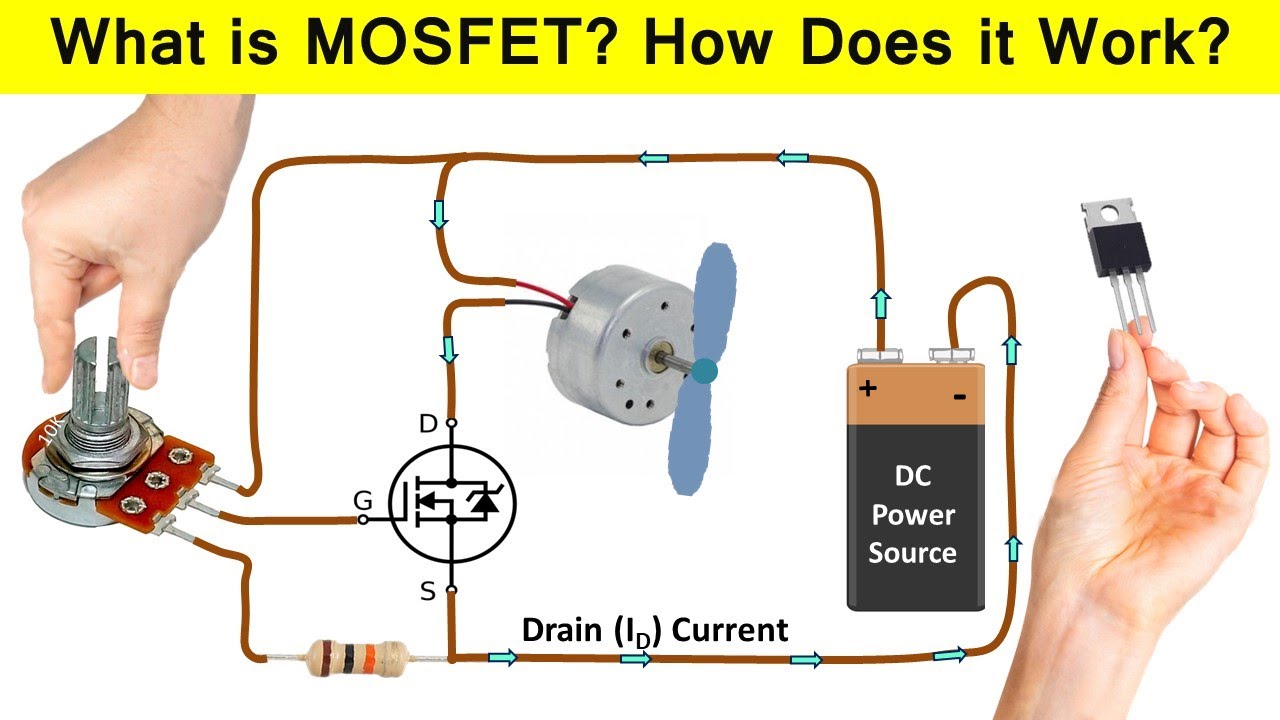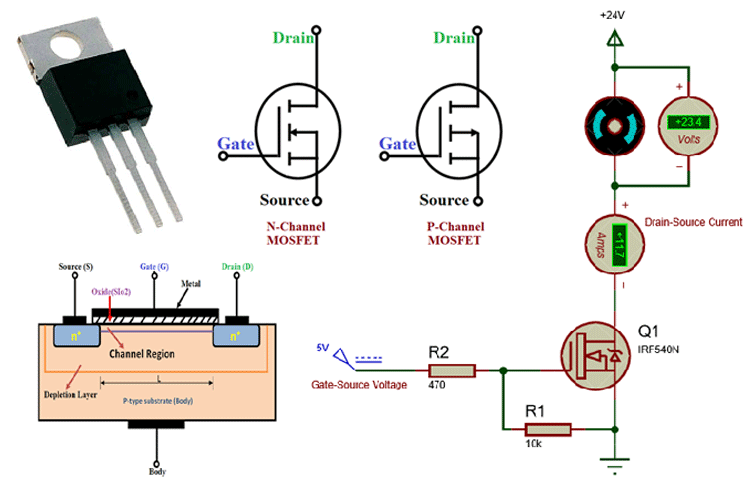Alright, so picture this: I was messing around with this little motor control circuit last weekend, feeling pretty good about myself. Hooked everything up just like I thought it should be, hit the power switch… and absolutely nothing happened. Zilch. Nada. The motor just sat there looking at me. Worse than the time I tried to make toast by yelling at it.

Getting Poked and Prodded
First thing I did, obviously, was poke the battery. Still charged. Okay, good start. Then I started jabbing my multimeter probes around the circuit like a confused doctor looking for a heartbeat.
- Voltage? Yeah, seemed okay leading up to this tiny black box thing – the MOSFET – people kept telling me to use.
- But after the MOSFET? Almost nothing. Like the road ended right at its feet.
That’s when I remembered I had no clue what the three little legs on the MOSFET were actually doing. Drain, Source, Gate. It was a mystery party and I wasn’t invited. This whole “Drain Function” nonsense seemed like where the party started.
The “Let’s Burn Stuff” Phase
Time for some… hands-on learning. Which is code for “might fry something.”
- Grabbed an old dead project board and started chasing traces. Where did the wire attached to the “Drain” leg go? Traced it… straight to the motor’s positive side. Huh.
- Probed it live (carefully, mostly). Power came out of the Drain leg to the motor when the Gate got tickled with voltage. Without the Gate getting tickled? Drain was shut tighter than a pickle jar I gave up on.
- Made a classic mistake. Connected the motor wrong once, through the MOSFET, backwards. Saw a quick spark. Felt my stomach drop. Heard a tiny pop. FLAMES? Thankfully no. But RIP, one little MOSFET sacrificed itself for my stupidity. Drain apparently REALLY doesn’t like becoming the entrance when it’s supposed to be the exit.
So after murdering a battery pack and a MOSFET (may they rest in electronic peace), the picture started getting less blurry. That “Drain” leg on the MOSFET? Think of it like:
- The Bouncer. It controls who (the current) gets let OUT of the club (the MOSFET), but ONLY if the Gate security guard gives the green light.
- Where the Load Hangs. Whatever you wanna power – motor, light, annoying buzzer – that gets connected between the Drain leg and the power source. It’s the exit point for the party to get started.
- The Exit Door. Stuff comes out through Drain (when the Gate says okay) and flows in through Source to get back home (ground).
My initial circuit was a dud because I somehow had the load wired to the wrong exit door. Blamed the MOSFET when it was really just me being blind. Fixed the wiring – connect the motor between the Drain leg and positive power – gave the Gate its little tickle of voltage… and the motor spun like a happy puppy chasing its tail!

Why Do I Know This Now?
Honestly? Because failing is a better teacher than reading diagrams sometimes. I only truly grasped what the Drain does once I saw my circuit doing nothing, then saw sparks fly when I made it angry, and finally got that motor humming because I stopped treating the MOSFET like a magical triangle and started seeing it as a tiny traffic cop for electricity.
You can read all day about Drain being the “output terminal” or “load connection point,” but until you fry one trying to shove power into the Drain when it just wants to let it out? Yeah, that lesson gets branded on your brain. Next step: figuring out why my “gate tickle” needs a resistor… another day, another possible fried component!

